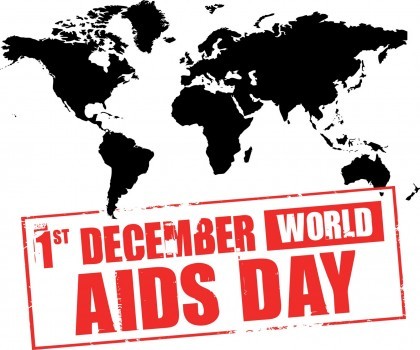World AIDS Day 2014

December 1, first declared World AIDS Day in 1995, is dedicated to raising awareness of the AIDS pandemic caused by the spread of HIV infection. A number of celebrities have lent their time and name to addressing the needs of the worldwide HIV community. Superstar Elton John began the Elton John AIDS Foundation. Since 1992, the organization has raised over over $125 millions to support educational programs targeted at HIV/AIDS prevention, the elimination of prejudice and discrimination against HIV/AIDS-affected individuals, and for programs that provide services to people living with or at risk for HIV/AIDS. U2’s Bono not only shows his fervent activism on behalf of debt relief for African nations, but also in his efforts to raise awareness about the uncontrolled spread of AIDS there. Singer Alicia Keys, after witnessing firsthand the ravages of HIV/AIDS in Africa, became an ardent supporter of the organization Keep a Child Alive.
Other celebrity supporters include: Rihanna, Chris Brown, Miley Cyrus , Whoopi Goldberg, Angelina Jolie, Brad Pitt, Lady Gaga, Kim Kardashian, George Clooney, Ellen Degeneres, Justin Timberlake, Chris Brown and Victoria Beckham.
The theme for 2014 – “Focus, Partner, Achieve: An AIDS-Free Generation” – reflects the drive to focus on interventions that work and partner with a broad range of stakeholders to achieve control of the epidemic and move closer to an AIDS-free generation.
What Is HIV? (Source: CDC)
“HIV” stands for Human Immunodeficiency Virus. To understand what that means, let’s break it down:
H – Human – This particular virus can only infect human beings.
I – Immunodeficiency – HIV weakens your immune system by destroying important cells that fight disease and infection. A “deficient” immune system can’t protect you.
V – Virus – A virus can only reproduce itself by taking over a cell in the body of its host.
HIV is a lot like other viruses, including those that cause the “flu” or the common cold. But there is an important difference – over time, your immune system can clear most viruses out of your body. That isn’t the case with HIV – the human immune system can’t seem to get rid of it. That means that once you have HIV, you have it for life.
We know that HIV can hide for long periods of time in the cells of your body and that it attacks a key part of your immune system – your T-cells or CD4 cells. Your body has to have these cells to fight infections and disease, but HIV invades them, uses them to make more copies of itself, and then destroys them.
Over time, HIV can destroy so many of your CD4 cells that your body can’t fight infections and diseases anymore. When that happens, HIV infection can lead to AIDS, the final stage of HIV infection.
However, not everyone who has HIV progresses to AIDS. With proper treatment, called “antiretroviral therapy” (ART), you can keep the level of HIV virus in your body low. ART is the use of HIV medicines to fight HIV infection. It involves taking a combination of HIV medicines every day. These HIV medicines can control the virus so that you can live a longer, healthier life and reduce the risk of transmitting HIV to others. Before the introduction of ART in the mid-1990s, people with HIV could progress to AIDS in just a few years. Today, a person who is diagnosed with HIV and treated before the disease is far advanced can have a nearly normal life expectancy.
No safe and effective cure for HIV currently exists, but scientists are working hard to find one, and remain hopeful.
What Is AIDS?
 “AIDS” stands for Acquired Immunodeficiency Syndrome. To understand what that means, let’s break it down:
“AIDS” stands for Acquired Immunodeficiency Syndrome. To understand what that means, let’s break it down:
A – Acquired – AIDS is not something you inherit from your parents. You acquire AIDS after birth.
I – Immuno – Your body’s immune system includes all the organs and cells that work to fight off infection or disease.
D – Deficiency – You get AIDS when your immune system is “deficient,” or isn’t working the way it should.
S – Syndrome – A syndrome is a collection of symptoms and signs of disease. AIDS is a syndrome, rather than a single disease, because it is a complex illness with a wide range of complications and symptoms.
As noted above, AIDS is the final stage of HIV infection, and not everyone who has HIV advances to this stage. People at this stage of HIV disease have badly damaged immune systems, which put them at risk for opportunistic infections (OIs).
You are considered to have progressed to AIDS if you have one or more specific OIs, certain cancers, or a very low number of CD4 cells. If you have AIDS, you will need medical intervention and treatment to prevent death.
How Do You Get HIV or AIDS?
Signs and Symptoms
US Statistics
Fast Facts
- More than 1.2 million people in the United States are living with HIV infection, and almost 1 in 7 (14%) are unaware of their infection.
- Gay, bisexual, and other men who have sex with men (MSMa), particularly young black/African American MSM, are most seriously affected by HIV.
- By race, blacks/African Americans face the most severe burden of HIV.
Global Statistics









































1 Comment